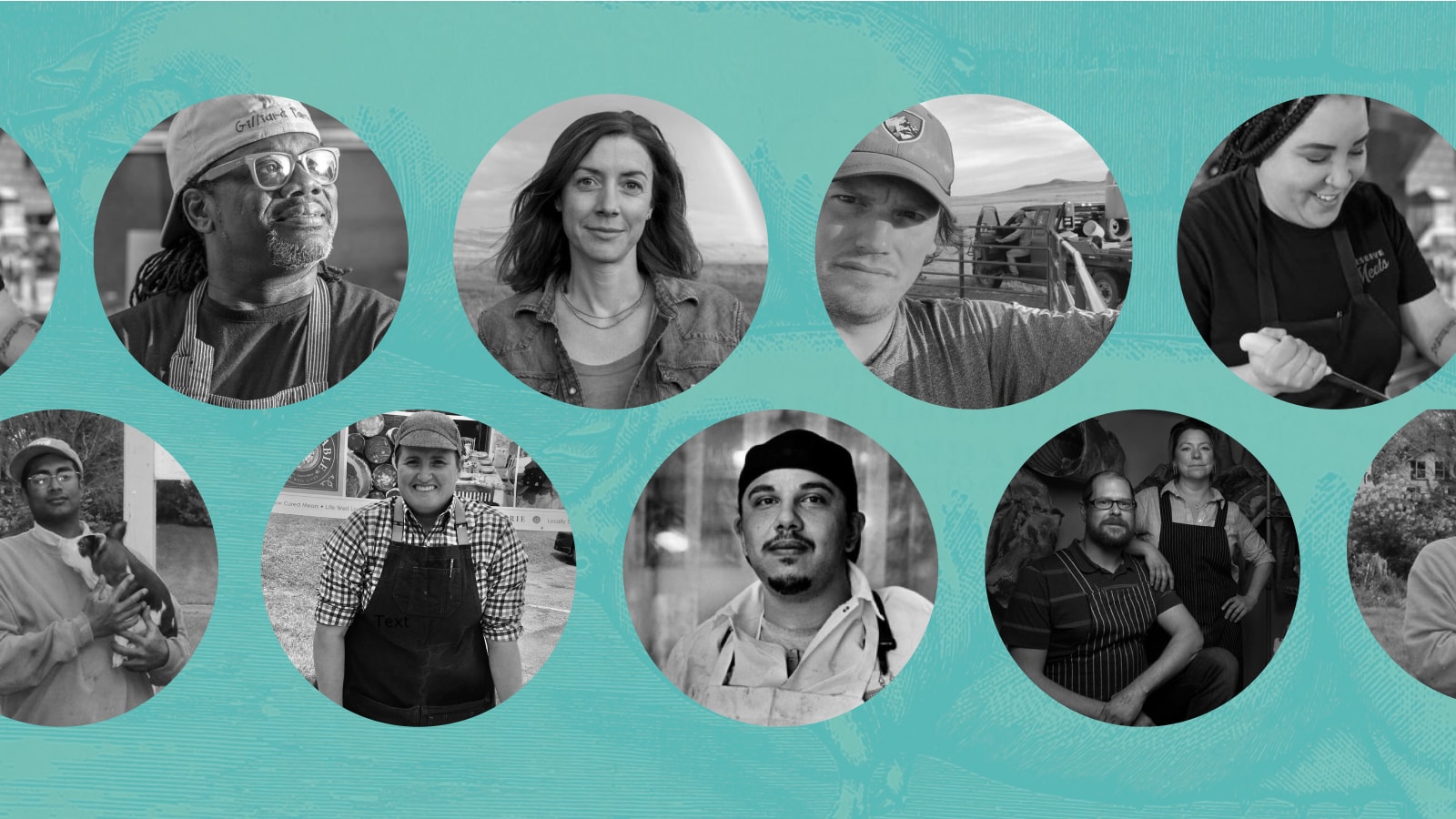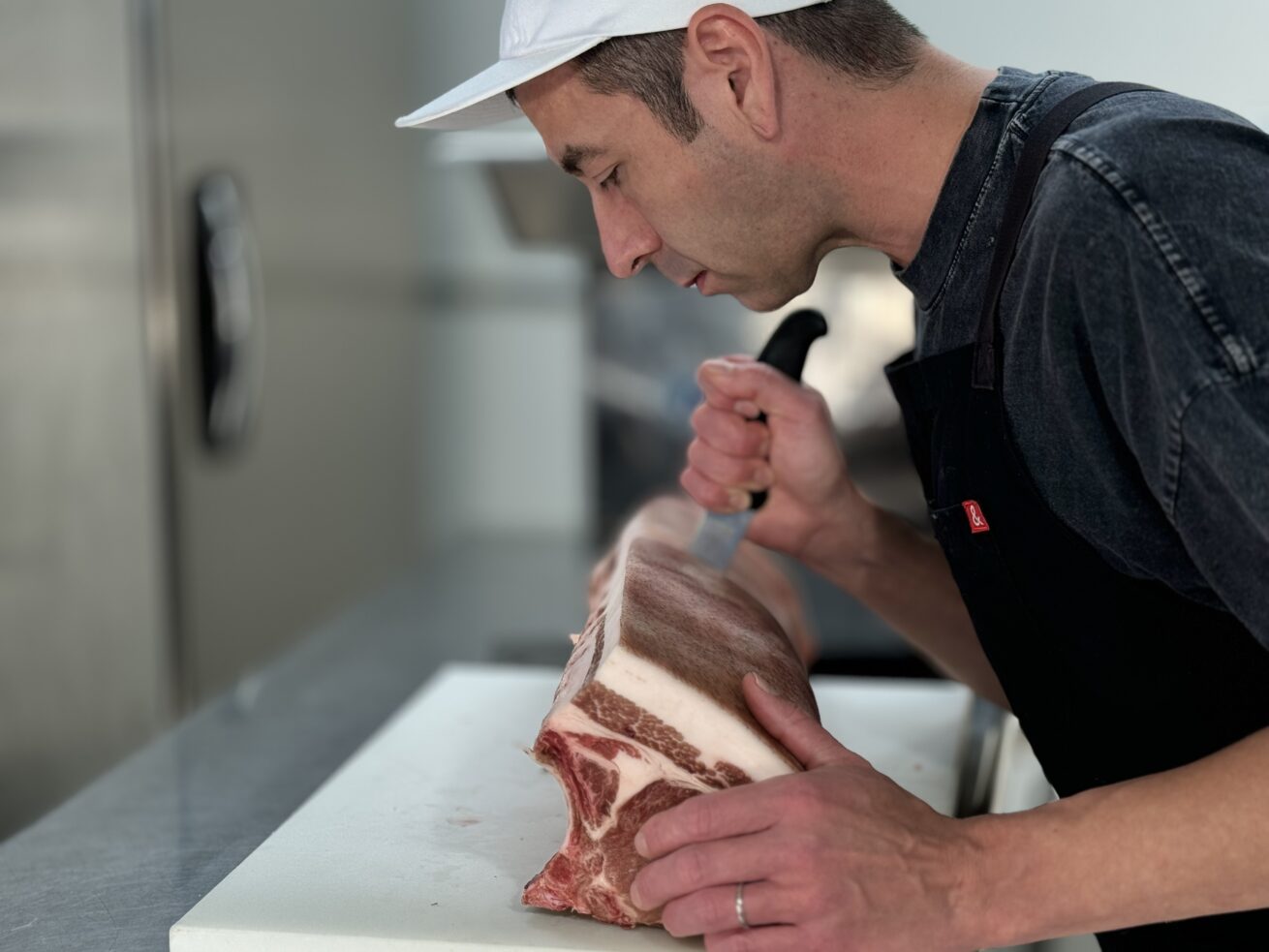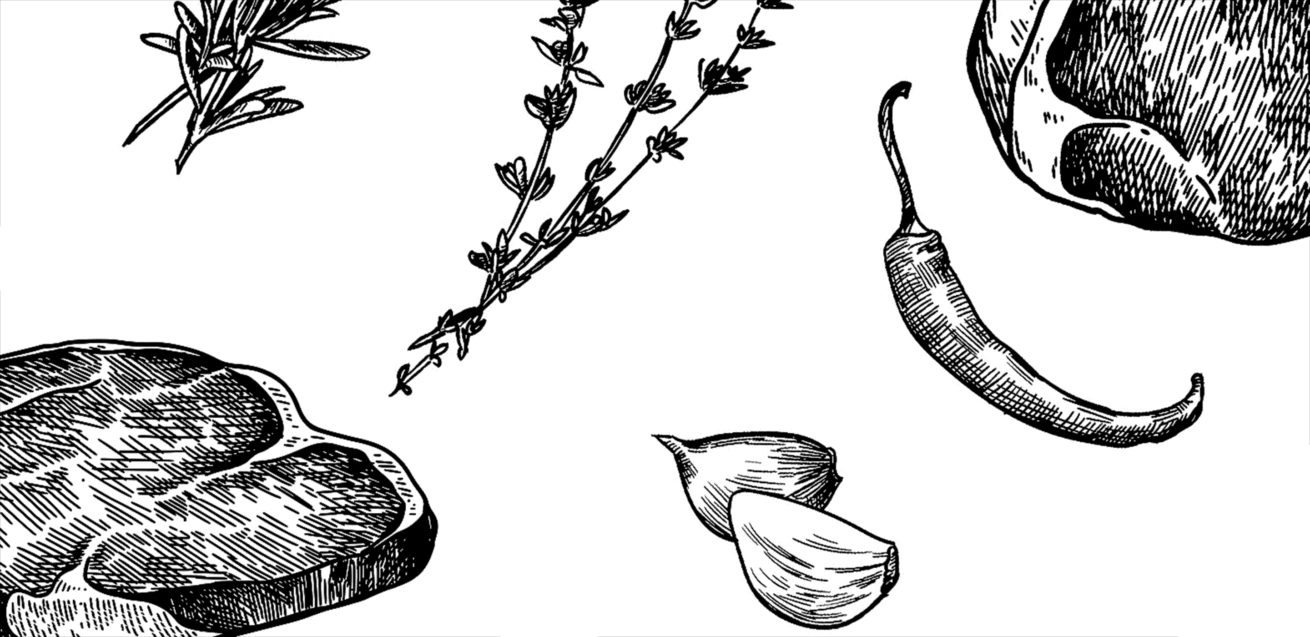Good Meat BreakdownGood Meat® Snapshots
Lee Meisel


Lee Meisel is a butcher from Lawrence, KS. Born and raised in North Dakota to a family of cattle ranchers and farmers, Lee is a member of the Standing Rock Sioux Tribe of North Dakota. He learned the butchering trade as a teenager in his hometown of Mandan, and relocated to Lawrence in 2005 to attend Haskell Indian Nations University.
Lee and his wife/partner opened their fast casual restaurant, Leeway Franks, in 2015 and then a retail store, Leeway Butcher, in 2018. The Leeway brand focuses on utilizing whole animals sourced from family-owned Kansas farms. Lee specializes in hand-crafted sausages, curing, smoking, and live-fire cooking techniques. Leeway Franks & Butcher was twice awarded Minority Owned Retail Enterprise of the Year by the Kansas Department of Commerce, named Emerging Small Business of the Year by the Kansas Small Business Development Center and a finalist for the Kansas Governor’s Award of Excellence.
How long have you been a butcher, and how long have you operated and owned the businesses?
I started working at a butcher shop in North Dakota as a teenager and I started at the very bottom, working mostly during deer season. The butcher shop I worked at processed a lot of deer and wild game, which was a big part of that model and they're one of the few shops in our area that still does deer season processing. That kept me pretty busy, and gave me an opportunity to get my feet wet in the industry. But I learned all of the things that you need to know in this line of business from processing the animals and learning how to cut for retail, and learning how to make value-added products. I made a lot of sausage, which is where I began my sausage-making career, I guess. I learned almost everything I needed to know about the work itself and developed the skills that someone needs to become a butcher.
However, there were things that bothered me about what we were doing. For example, I would take inventory in the walk-ins and see boxes and boxes of IBP labeled beef from floor to ceiling. Even though we were working with local farmers, a good majority of what we were doing came from boxes. Doing that over and over again planted a seed of doubt in my mind.
Then came a point in my career where I realized that maybe there's a different way of going about this.
After working as a meat cutter, I worked in a high-end restaurant that did its own processing of charcuterie sausages, which really was the beginning of me developing a lot of my own products. We opened the butcher shop in 2018 and things were going really well. So, three years later we decided to open a little tiny little restaurant two doors down from our butcher shop called Leeway Franks, where we specialize in sausages and Midwestern comfort food classics.
We offer a lot of different value-added products and we bring in whole animals and work directly with local farmers to make those connections, which has become our driving force. Over the years we developed such great relationships with our local farmers and producers, and we are really proud to center them and promote them locally. So we're very fortunate.
This past year, we have really pushed our focus on our butchering side of things by developing our products a little bit more to get those into local retail stores.
We're also teaching classes in the former restaurant space and that's going to be a big part of some of our future endeavors.
How do you define your Good Meat® values?
We promote local meat and local meat producers first, and we only support those who respect the lives of their animals--those producers who act as responsible stewards of the land. We take a very personal approach to who we decide to do business with, and I think that makes a big difference.
What's one thing you wish consumers knew about buying meat?
I would say that the average consumer doesn't realize how supporting local food systems is actually a large part of the solution--a larger part of the solution than they may realize.
When you buy local meat, you help pay a farmer or producer a living wage. You create connections between the food on your plate and the people who raise it. You invest in local economies and these are the economies that need it the most.
I wish more people knew how much power they had with just their wallet and where they choose to spend their money, that buying local truly does make a difference.
Is there an impact in the work that you do extend to local legislature, the local community, and your tribal community?
For years policymakers didn't share [our] same values. And even in a state like Kansas where there is so much agriculture, there are still so many limiting factors that make Kansas a less than desirable place for agriculture to thrive in ways that affect some of the smallest producers. I worry about the livelihoods of the smaller producers, and I think that we're working towards changing some of the policy that allows things like processing facilities to open, and that allow Indigenous foods, for example, to be introduced into the school system. I feel like we're on the cusp of really great things happening and we need to start focusing on where our communities want to be headed when it comes to where our food comes from.
It's an exciting time now and there is a lot of good change coming on the horizon, particularly when talking about Indigenous food systems. Things like conservation, sustainability, and resourcefulness. Those are important Indigenous values. The interconnectedness between living animals and the bond that we share with them means death to one and life to the other. To me, those ideas are more powerful than cynicism, bottom lines, or cruelty for the sake of convenience.
What is one of your biggest challenges as a Good Meat® butcher?
I find that, as butchers, we really tend to focus on our skills and the actual process of cutting, and we walk a tightrope in the retail business because we work in a world where a single knife cut could be the difference between making money. I think we need to start thinking of ourselves as educators as well, not just educating people about guiding their purchasing decisions. That could be anything from explaining the particular carcass anatomy or how you would prepare or cook an item that someone might be unfamiliar with.
We need to begin sharing our knowledge with the younger generation of butchers who are going to be picking up this work, which if you look at that generation, that younger generation, it's woefully small.
I wonder if we are not doing a good enough job telling our story and providing a positive narrative for our industry to try to ensure that the future of these little of these small mom and pop shops like I run, or even the small-scale county processor who you used to be able to bring your cattle to before all the disruption and before they lost all of their meat cutters to one of the big packers out on the west side of the state.
I worry about the future and what that looks like, for sure. And I think the time is now to share our knowledge and to spread the word of good meat. If that's something that we value, then that's where we need to start focusing our energies.
What cut of meat do you think is the most undervalued or underutilized?
If we're just talking about retail cuts, I think that sirloin is an underutilized and undervalued cut for both beef and pork, in particular pork. For whatever reason, that cut has been very difficult to sell at retail.
Here in the Midwest, people love ribeye. If they want something a little bit leaner, they immediately think of the strip steak. We're talking about the middle cuts here, and there's so much more that's available on the animal. I would say that beef sirloin offers so much in terms of flavor, and balance of flavor to tenderness.
It's a great value, the price is great. Sirloin has several different cuts that can be taken from it. It's our job as butchers to not just present things and give it a label, but we need to start engaging and talking about what it is. That tends to lead to conversations about where the beef comes from, how they're fed, how they're finished, and it just opens things up.
So when people come into our shop and they don't know what to get, I try to push them towards something like sirloin. At the store, sirloin looks completely different than when you see someone who's cut it off the bone at a meat shop.
Pork sirloin is also a good versatile cut of meat. You can pound it into cutlets, you can cut it for skewers. And it's such a good deal. The fat cap on sirloin is some of the sweetest fat on the animal.
There's just a lot going for it and it's recognizable. Everyone's heard of sirloin, they might not know where it comes from on the animal but it's approachable and it's affordable.
And it's great. I love sirloin.
What meat cut are you eating that you really enjoy, or one that you like to have for a special occasion?
So, during summertime, I get into the red meat thing. And I love a nice, smaller, thin cut that I can cook quickly in a pan along with the vegetables and do my one-pan quick dinner at the end of the day. I almost never want a big, thick ribeye.
So, my go-to, actually comes from the sirloin. There’s an industry term for it, it’s a mouse muscle or pillow steak. It's a gluteus accessorias muscle. It's just a small little muscle that wraps around the femur bone. But when you separate it from the sirloin, you can get a four to five-ounce thin little steak that is so tender and so flavorful, and you can cook it really quickly. I just love that steak.
The other one that I like is one from the shoulder, the subscapularis, the retail name for it is a Vegas strip.
Sometimes it doesn't sell, so I can take one of those home and those are pretty good. If I'm splurging and doing something fancy, I typically will braise something. I love braised lamb shanks so much with roasted vegetables and I’ll make some dumplings.
What's your “why”? Why are you doing this work?
This is something that I was really thinking a lot about. Thanks to you. I think it's easy to get wrapped up in what you're doing (and we all do it), and that “why” part is a really difficult thing to tackle, but I want to. And this is really sort of the impetus for why I am shifting towards education in my career. Why? Because animals and people need each other. That bond between us is such a powerful thing, and it's something I think about a lot.
For me, I wanna make it better. That's why.
Good Meat® Snapshots
Popular Links

Transparency in meat, from pasture to plate.
Practical tools and a national directory to help you choose—and champion—ethical and responsible meat.